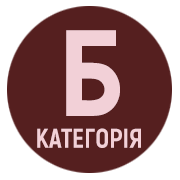THE CREATION OF «META-INSTRUMENTS» AS A MEANS OF EXPANDING THE TIMBRAL PALETTE IN THE WORKS OF CHAYA CZERNOWIN: A STUDY OF «AFATSIM» AND THE STRING QUARTET
DOI:
https://doi.org/10.32782/2310-0583-2024-52-07Keywords:
Chaya Czernowin, meta-instruments, timbral palette, complex timbre, contemporary music, new musicAbstract
The article is dedicated to the analysis of the compositional practice of Israeli-American composer Chaya Czernowin (b. 1957) in the context of contemporary academic music. Special attention is given to examining her approach to expanding the timbral possibilities of instrumental music through the concept of «meta-instruments». The aim of the study is to identify Czernowin's artistic strategies in works such as «Afatsim» (1996) and String Quartet (1995), which demonstrate her innovative approach to the interaction between traditional instruments and experimental timbral structures, as well as to reflect on Czernowin's approaches to the creation of «meta-instruments» as a means of expanding the timbral palette in the context of contemporary academic music. The research methodology is based on a combination of historical and contemporary musicological methods, including score analysis. Theoretical generalization methods are also used to systematize the key principles of creating «meta-instruments» in Czernowin's work. The scientific novelty lies in the introduction of the concept of «meta-instrument» into scholarly discourse and the first comprehensive analysis of its use as a method of expanding the timbral palette, which is an important aspect of contemporary compositional technique. The focus is on the composer's unique approach to employing unconventional sound production techniques and her ability to transcend the boundaries of traditional instrumentation. This approach, in particular, allows Czernowin to significantly alter the character and sound of instruments. It is important to note that working with the expressive component of sound becomes an integral part of the author's creative process. The conclusions demonstrate that «metainstruments » in Czernowin's works serve as an essential means for expanding timbral possibilities, creating complex multilayered textures, and innovative soundscapes. Her work on sound transformation through the creation of complex timbres using extended instrumental techniques opens up new perspectives for the development of contemporary music.
References
Shley-Zondiner S. Striving for the Underneath: Body and Pathos in Chaya Czernowin’s Composition for Voice in Infinite Now and Heart Chamber. Tempo. 2023. 77(305). P. 44–59. https://doi.org/10.1017/S0040298223000086.
Dusman L. Chaya Czernowin: Conversations and Interludes. Contemporary Music Review. 2015. 34(5–6). P. 464–477. https://doi.org/10.1080/07494467.2016.1150478.
Тукова І. Звукопошукова тенденція у композиторській практиці другої половини ХХ – початку ХХІ століття. Часопис Національної музичної академії України імені П. І. Чайковського. 2019. Вип. 3. С. 56–69.
Ferneyhough B. The Tactility of Time (Darmstadt Lecture 1988). Perspectives of New Music. 1993. 31(1). P. 22–30.
Czernowin C. Compositional Ideas and Trajectories in Recent Works. Komponieren in der Gegenwart: Texte der 42. Internationalen Ferienkurse fuer Neue Musik. Saarbruecken: Pfau, 2006. P. 25–28.
Bača T. About the Work. Chaya Czernowin’s personal website. URL: http://chayaczernowin.com/about-the-work (дата звернення: 12.05.2024).
Czernowin C. The Last Tiger. Chaya Czernowin’s lecture notes. URL: https://www.academia.edu/1566678/The_Last_Tiger (дата звернення: 06.04.2024).
Straus J. N. Introduction to Post-Tonal Theory. 2nd ed. Upper Saddle River, N.J.: Prentice Hall. 2000. 260 p.







